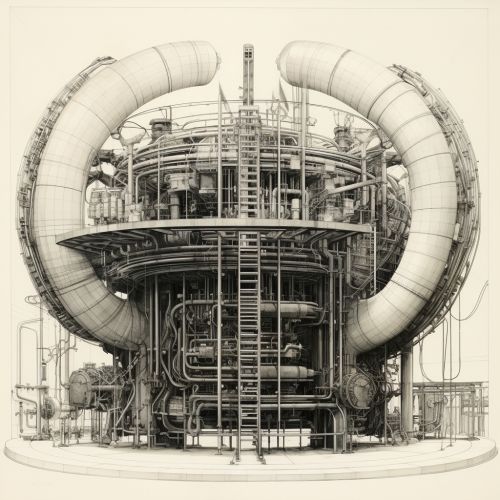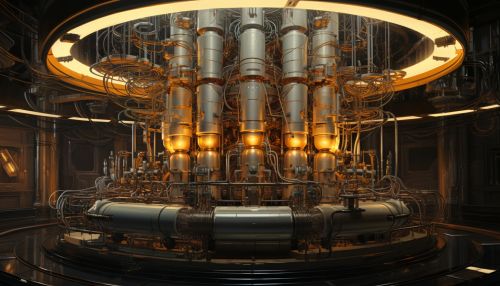Magnetic confinement fusion
Introduction
Magnetic confinement fusion is a method of achieving nuclear fusion by using magnetic fields to confine the hot plasma. This technique is one of the two major branches of fusion research, the other being inertial confinement fusion. The magnetic confinement method is pursued because it potentially offers a continuous and sustainable path to fusion energy, as opposed to the pulsed operation of inertial confinement fusion.


Principle of Operation
The principle of operation of magnetic confinement fusion involves the use of magnetic fields to confine a plasma of fusion fuel in a particular geometry. The fuel, typically a mixture of deuterium and tritium, is heated to temperatures in excess of 100 million degrees Celsius, at which point the fuel becomes a plasma. The plasma is confined within a magnetic field, which prevents it from coming into contact with the walls of the reactor. This confinement is necessary because no material could withstand the extreme temperatures of the plasma.
Types of Magnetic Confinement Fusion Devices
There are several types of magnetic confinement fusion devices, each with its own unique design and operational characteristics. These include the tokamak, the stellarator, the spheromak, and the reversed field pinch.
Tokamak
The tokamak is the most well-known and extensively studied type of magnetic confinement fusion device. It features a toroidal (doughnut-shaped) configuration, with a strong toroidal magnetic field and a weaker poloidal field to confine the plasma. The combination of these fields results in a helical field that keeps the plasma stable and confined.
Stellarator
The stellarator is another type of toroidal device, but it differs from the tokamak in its method of creating the magnetic field. In a stellarator, the magnetic field is entirely produced by external coils, which are twisted in a complex, three-dimensional shape. This design allows for continuous operation, but it is more difficult to build and maintain than a tokamak.
Spheromak
The spheromak is a type of magnetic confinement fusion device that uses a simple, spherical geometry. It is similar to a tokamak, but it does not require a toroidal field coil or a central solenoid. Instead, the magnetic field is created by currents flowing in the plasma itself.
Reversed Field Pinch
The reversed field pinch (RFP) is another type of toroidal device. In an RFP, the magnetic field is primarily produced by the plasma current, with a small contribution from external field coils. This design allows for a lower magnetic field strength than in a tokamak, but it also leads to a higher rate of plasma instabilities.
Challenges and Research Directions
Despite the promise of magnetic confinement fusion as a clean, sustainable source of energy, there are several significant challenges that must be overcome. These include achieving the necessary conditions for a self-sustaining fusion reaction, maintaining plasma stability, dealing with heat and particle fluxes to the reactor walls, and managing the neutron radiation produced by the fusion reactions.
Current research in magnetic confinement fusion is focused on addressing these challenges. This includes the development of advanced materials for reactor walls, the study of plasma physics to improve stability and confinement, and the design of new reactor configurations to optimize performance.
See Also
Fusion power Nuclear fusion Plasma physics Tokamak Stellarator Spheromak Reversed field pinch
